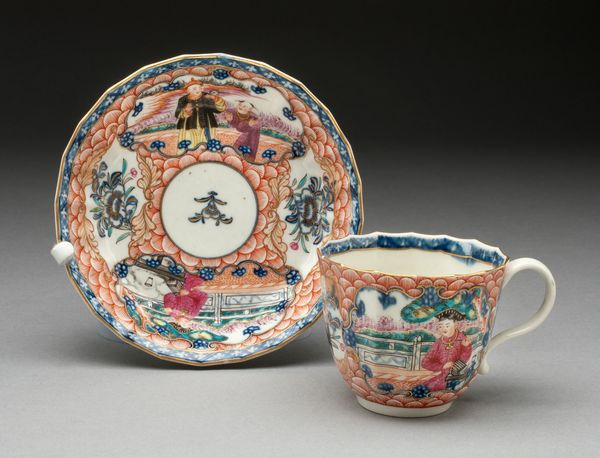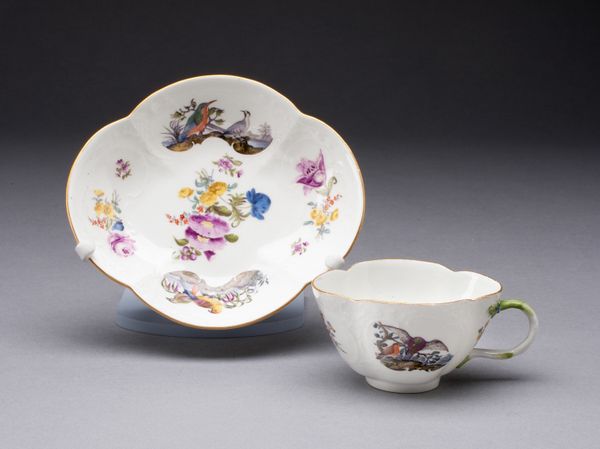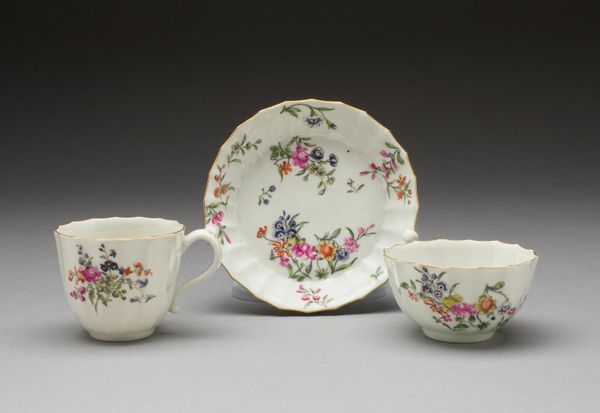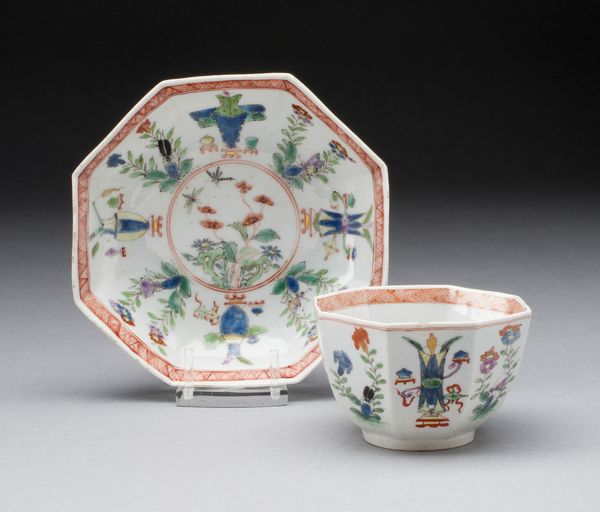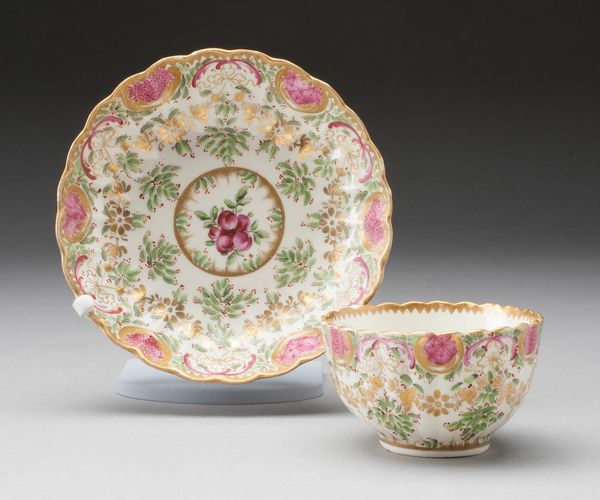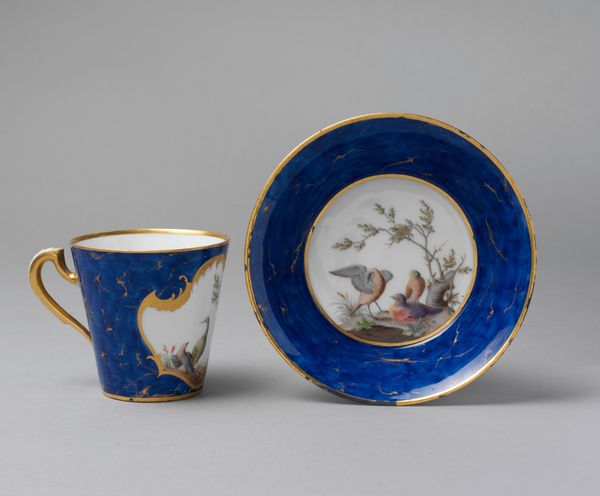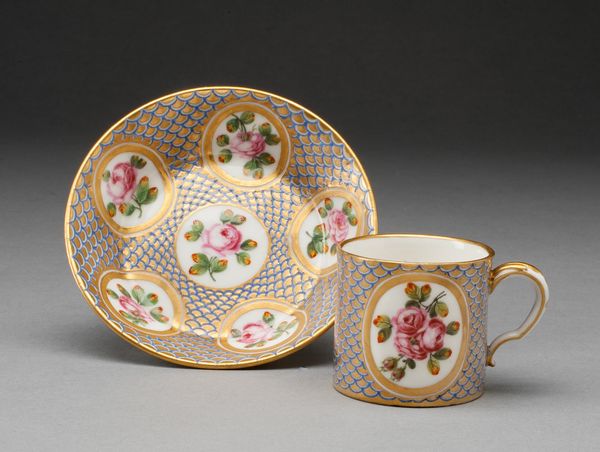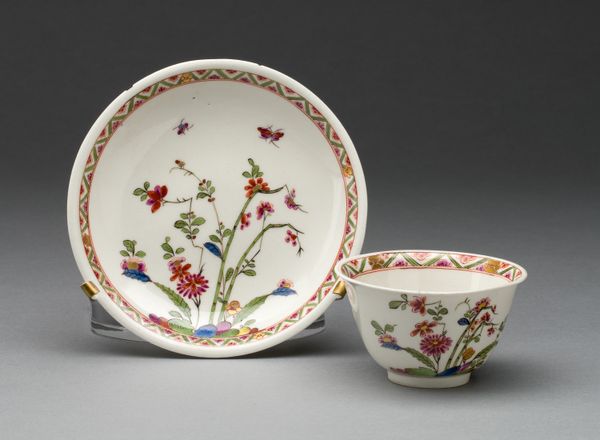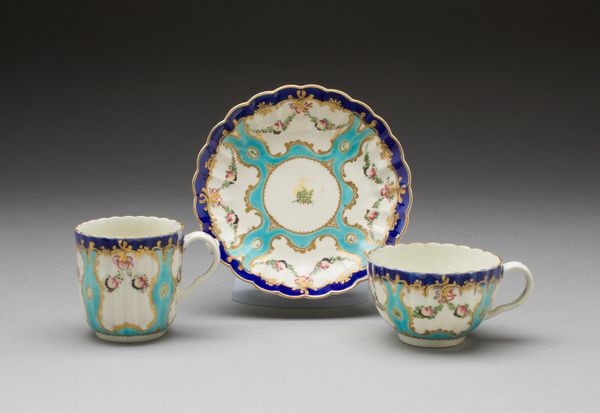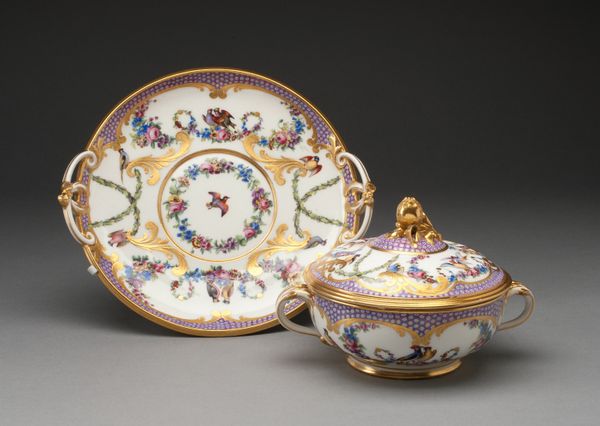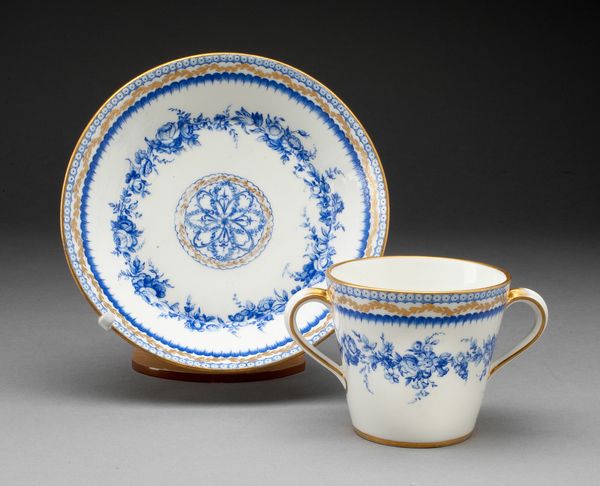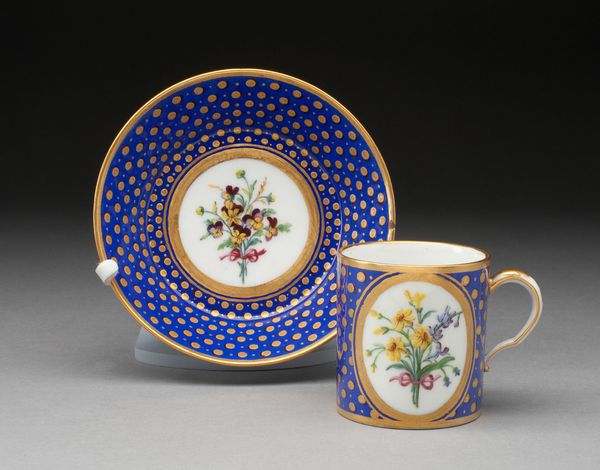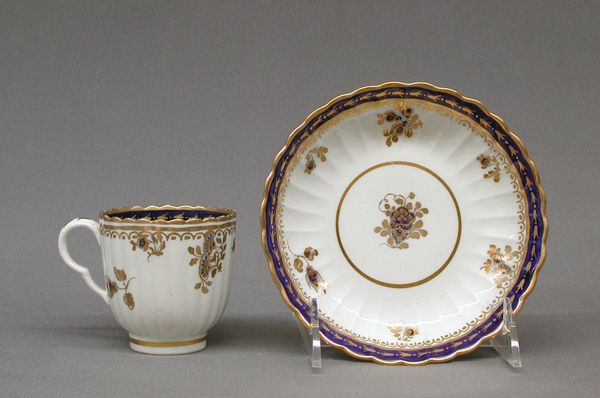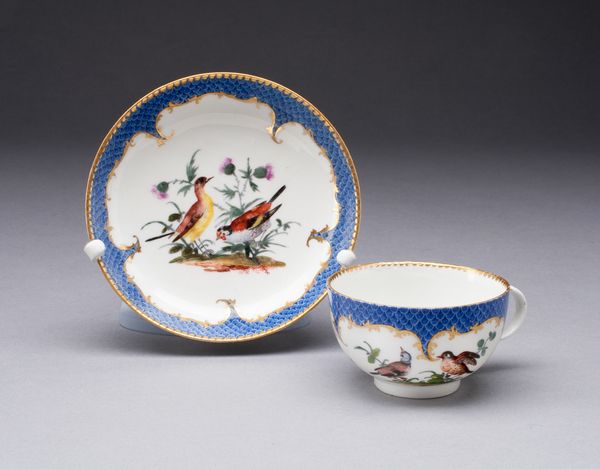
Tea Bowl, Coffee Cup, and Saucer c. 1765
0:00
0:00
ceramic, porcelain
#
ceramic
#
jewelry design
#
porcelain
#
vessel
#
decorative-art
#
rococo
Dimensions: Tea bowl: diam. 4.2 cm (1 5/8 in.); Cup: H. 6.3 cm (2 1/2 in.); Saucer: diam. 11.6 cm (4 9/16 in.)
Copyright: Public Domain
Curator: What a visually striking set. The Rococo style bursts forth, doesn't it? Editor: Indeed. Before we delve in, allow me to observe a certain formality in its composition. The use of dark blue, set against a white background, segmented by the rich gilding, certainly lends an air of luxury. Curator: That gilded ornamentation! Let’s take a closer look at this "Tea Bowl, Coffee Cup, and Saucer," created around 1765 by the Worcester Royal Porcelain Company. Porcelain, a highly sought-after commodity at the time, was as much a statement of social standing as a functional object. Editor: Absolutely, and consider how the repeated motifs create harmony among the pieces. Each vignette—butterflies, cherubic figures—is carefully framed. But who was consuming from these pieces? Were they simply admiring this intricate, elaborate detail? Curator: Certainly the ownership and display of such delicate pieces were about reinforcing social hierarchies and demonstrating refined taste. Tea consumption itself was a ritual deeply embedded in social performances. The images evoke classical ideals. The leisurely poses signal refinement, even an evasion of productive labor. Editor: I agree; it projects leisure, yes, and a carefree decadence in both form and ornament. Curator: This set represents an era where even mundane activities such as drinking tea or coffee became occasions to perform one's social standing. Today, at the Art Institute of Chicago, it speaks of complex interplay between material culture, class, and identity. Editor: When considered as an array of shapes, this porcelain service really showcases the dynamism that line and color can give to a set of domestic vessels, echoing forms beyond the object themselves, it gives each drinker an opportunity to see a part of the social life of its owner. Curator: It makes one reflect on what such pieces communicate beyond utility, don't you think? Editor: Precisely. A reminder that art infuses even the most seemingly commonplace corners of life.
Comments
No comments
Be the first to comment and join the conversation on the ultimate creative platform.
